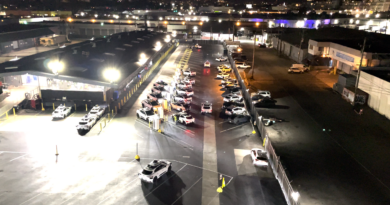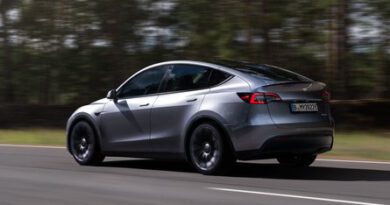Comparing Crash Rates of Waymo and those of Human Drivers
If you scroll through the news in recent months, you get the impression that autonomous cars pose a huge safety risk. Yet the figures say something completely different. A few weeks and months ago, Cruise, Tesla and Waymo presented statistics showing how superior autonomous vehicles are to humans. The figures are based on comparisons with damage reports available to insurance companies and analyzed by university researchers.
Now Waymo has presented further comparisons comparing the 7.14 million driverless miles (11.424 million kilometers) driven so far with human drivers, and even in these early stages of Robotaxis, it is amazing how safe Robotaxis are. By the end of October 2023, the numbers in the three locations of Phoenix, San Francisco, and Los Angeles – where Waymo Robotaxis are driverless 24 hours a day, seven days a week – were analyzed and compared to the corresponding accident numbers caused by human drivers during the same period, resulting in police reports, injuries, and/or property damage. The results speak for themselves:
An 85% or 6.8 times lower injury accident rate, from minor to serious and fatal cases
(0.41 accidents per million miles – 0.256 accidents per million kilometers – for the Waymo driver vs. 2.78 per million miles – 1.74 per million kilometers – for human drivers).
A 57% reduction, or 2.3 times lower police-reported accident rate
(2.1 incidents per million miles – 1.3 per million kilometers – for the Waymo driver vs. 4.85 incidents per million miles – 3 per million kilometers – for human drivers)
In other words, in the 7.1 million miles (11.424 million kilometers) that Waymo drove, there were an estimated 17 fewer injuries and 20 fewer police-reported accidents than if human drivers had driven the same distance at the same accident rate in the areas where Waymo operates.
Percent reduction for the Waymo Driver in police-reported and any-injury-reported crashed vehicle rates compared to human benchmarks
Waymo has already collected so many kilometers of data for Phoenix and San Francisco that this difference is already statistically significant.
One point to consider in this comparison is the fact that many accidents involving human drivers are not reported. While robotaxis in the US have to report every collision, no matter how minor, to the authorities, it is estimated that only a third of accidents are reported to the police. Two thirds are reported to insurance companies, while one third never appear in the statistics. If the figures are corrected for these factors, autonomous cars would be far more than 90 percent safer on the road compared to humans.
Another point is the differences in driving conditions and/or vehicle characteristics. The public data on accidents involving people includes all road types, such as highways, where the Waymos currently only operate with a safety driver behind the wheel. And these statistics also include those involving different types of vehicles from heavy commercial vehicles to passenger cars and motorcycles, not just passenger cars as used by the Waymo.
Conclusion
The conclusion based on these and other figures is clear: we should ban human drivers behind the wheel as soon as possible and introduce robotaxis country-wide. Every day that humans are allowed to drive a vehicle leads to unnecessary suffering (and loss of productivity). This debate is clearly decided in favor of autonomous cars.
More details can be found on the Waymo blog itself.
KREATIVE INTELLIGENZ
Über ChatGPT hat man viel gelesen in der letzten Zeit: die künstliche Intelligenz, die ganze Bücher schreiben kann und der bereits jetzt unterstellt wird, Legionen von Autoren, Textern und Übersetzern arbeitslos zu machen. Und ChatGPT ist nicht allein, die KI-Familie wächst beständig. So malt DALL-E Bilder, Face Generator simuliert Gesichter und MusicLM komponiert Musik. Was erleben wir da? Das Ende der Zivilisation oder den Beginn von etwas völlig Neuem? Zukunftsforscher Dr. Mario Herger ordnet die neuesten Entwicklungen aus dem Silicon Valley ein und zeigt auf, welche teils bahnbrechenden Veränderungen unmittelbar vor der Tür stehen.
This article was also published in German.



